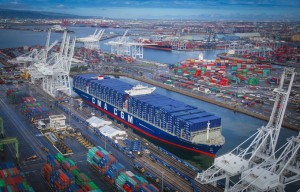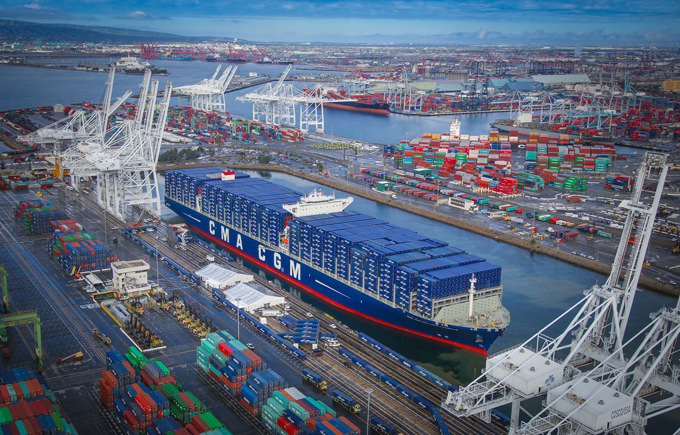 French container shipping line CMA CGM will assign from end of May its flagship fleet of six 18,000-TEU vessels on the Asia-U.S. West coast (USWC) trade lane, saying the move will “accelerate the growth of the trans-Pacific market,” which today is the “most dynamic” in the world.
French container shipping line CMA CGM will assign from end of May its flagship fleet of six 18,000-TEU vessels on the Asia-U.S. West coast (USWC) trade lane, saying the move will “accelerate the growth of the trans-Pacific market,” which today is the “most dynamic” in the world.
“This decision is in line with both the growth strategy set by the Group in the United States and around the world and the optimization of its fleet,” said a company statement released on its website.
“The flagship fleet of the Group will hence be deployed on the most active and dynamic market to date—the trans-Pacific market—and will support its development as well as that of its customers.”
Set to join the Pearl River Express service, the six behemoths are among the largest in the industry and are equipped with the latest environmental technology to significantly reduce the liner’s carbon footprint, said the company.
It added that the ultra-large container ships bear the names of the great explorers of history: CMA CGM Bougainville, CMA CGM Kerguelen, CMA CGM Georg Forster, CMA CGM Vasco de Gama, CMA CGM Zheng He, and CMA CGM Benjamin Franklin.
The Benjamin Franklin became the largest ship ever to call in the United States last December and was inaugurated on February 19 in Long Beach. It will remain on the trans-Pacific market, to be joined by the other five on the Pearl River Express service two months from now.
Group chairman and CEO Jacques R. Saade said during the inauguration that the company is “confident in the upturn of the U.S. economy,” and “by bringing the largest container vessel ever to U.S. shores, we are confirming our willingness to strengthen our presence in the United States.”
The Benjamin Franklin’s Long Beach call is part of a series of four trial calls by the liner to prepare U.S. ports to accommodate larger vessels.
“We are confident that U.S. ports will continue to upgrade their infrastructure and we are willing to accompany these improvements. The United States will progressively have bigger ships to serve its markets.”





